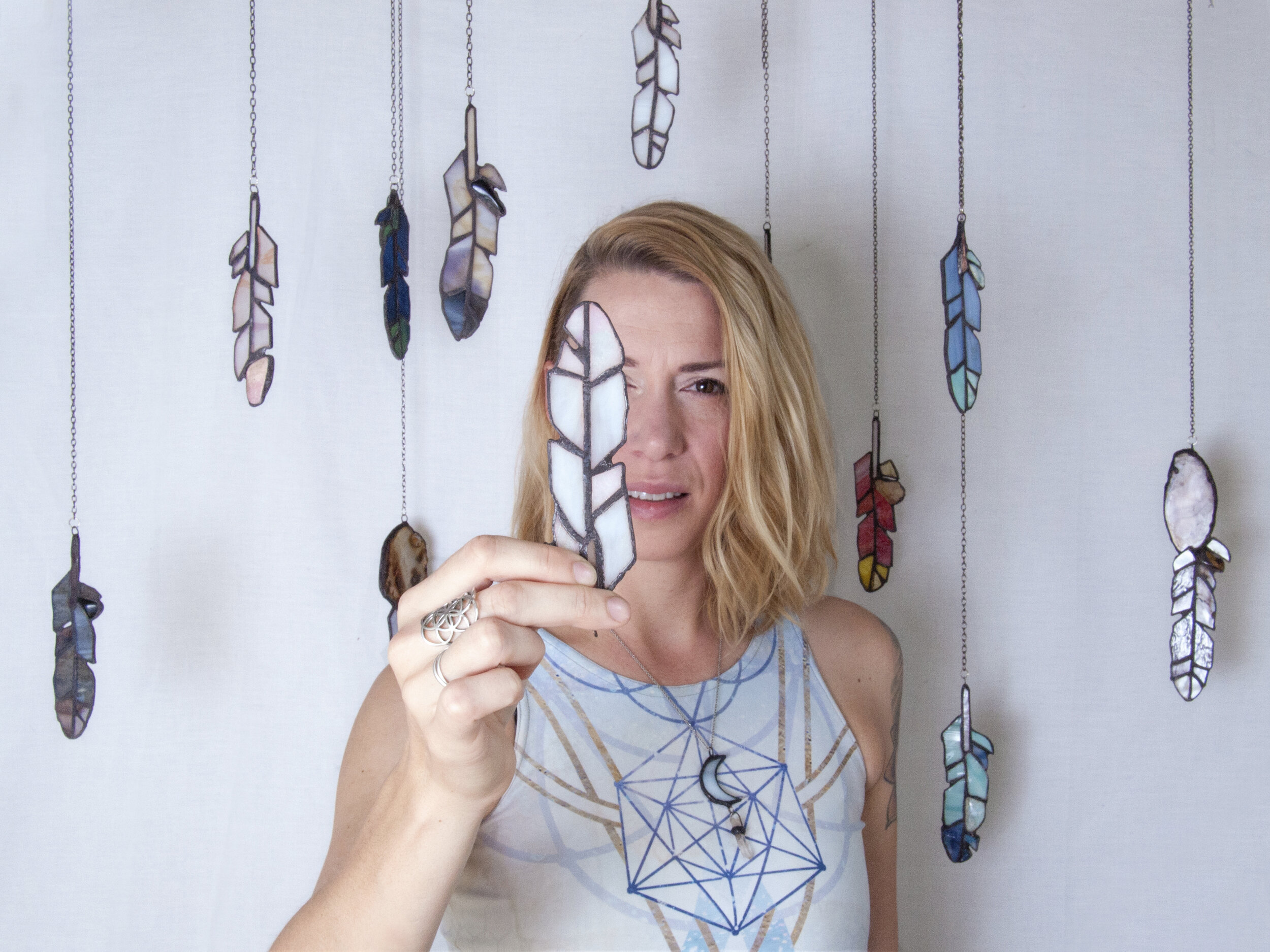
According to Henry Weibe in his book
Myth, Religion and Ritual : The Subversive Artist, the artistic practice is synonymous with a religious one. Weibe states that the creation and consumption of art is "for the soul's sake," and that art holds power because it is ubiquitous with ritual, which is one of the conditions of our humanity.
Wiebe also states that “…poets and artists are the source, the creators of life sustaining visions. They suggest, they set forth, they pattern life, provide its meaning, its possibilities, and its imperative. They are "dream makers." He suggests, "An artist is a dreamer consenting to dream of the actual world."
At this time there is a new cultural space that is being created where individuals are moving away from organized religion while also rejecting the nihilism of modernity. This religious mutation and combination of secular ideals is resulting in a new community of people who are engaged with an spiritually based ethics of responsibility towards the world and environment at large, without a concrete thesis of a particular religious practice.

If we move away from following a major religion, and instead apply our spirituality to an artistic practice, art can begin to hold a place of deep meaning and ritualized transformation. In this way art can function as a life shaping force, having to do with the way life is lived, the way morality is chosen and expressed, and the way myth is created and explored. Artists can become creators of visions, with the capacity to pattern life. By using religious space as a model for spiritual practice and transformative change, artists have the capacity to take ideas and concepts from various worldwide spiritual spaces and make something that is unique to a personal practice.
I love this quote from Eva Lewarne in her paper Artists as Shamans in Contemporary Society; ”In making art, the artist breathes herself out to allow the breathing in of universal air, intelligent with many minds, alive with energy. Artist, shape-shifter, shaman or poet, all are lovers of metamorphosis, all are capable of visions, insights and dreams. Real artists have taken up the role of the shaman in our times. Possibly because both art and shamanism use the realm of metaphor where feeling is expressed and where healing happens. With metaphoric vision, empathy flows, knowing no borders. Both artist and shaman create harmony within an individual, and between the individual and the wider environment, a way of thinking essential for life, which we have almost forgotten about in our pursuit of money and technology and power."
With this in mind, there are three parts in which I could categorize the similarities between religious and artistic practice. The Ritual, the Artifact, and the Temple.

Ritual
One the key aspects of spiritual practice is the capacity to change your state through two things - the repetition of action, and the creation of space sacred through our attention and presence.
Repetition reinforces the principles of practice and helps solidify it in the body of someone again and again. It is a returning to the historical knowledge of our ancestors, a carrying forward of the power by continually repeating the act and thus changing ourselves. The call to Mosque, going to church on Sunday, praying before dinner, religious holidays, offerings to your ancestors, these are all things that enforce our belief and help us stay connected to the sacred.
The act of focusing our attention and presence can be brought about in many ways and helps us change our state so we can connect. The drawing of the pagan circle, stressing the body, rites of passage, traditional ritual dress, praying, all of these things are essential to the core of spiritual practice in traditional religion.
These two actions completely blanket the entirety of artistic practice and the engagement with art. Every artist has a repetitive practice in the type of materials and subject matter they use. And each art piece seeks to change the state of the viewer through focusing attention and presence.
Artifact
The artifact is a sacred object that holds power either from contagion magic or iconic power. The law of Contagion is a folk belief that suggests that once two people or objects have been in contact, there is a magical link that persists between them. The object therefore, has the designation of "producing" the person or the person's spirit.
In the art world the effect is similar. The art object is a powerful thing that the viewer can use to connect to the power of the artists vision even when the artist isn’t there. An artwork that has been hand created by the artist holds more power and value than an replica, even if the two are visually identical. The "spirit' of the artist is present in the artwork even if the artist isn't there, or even is long dead.
Temple
Of course we can’t talk about spiritual space without the discussion of the temple. A temple is a place specifically reserved for religious activities like prayer, sacrifice or ritualistic rites. It is a space of worship and is found in almost all religions, whether it takes the form of a permanent structure, a building used occasionally, or a temporary circle drawn in the sand.
Art galleries or artistic sites are spaces that are meant for the exhibition of art. They can be either private or public and are intended to display various art forms. The role of these sites often tend to be in the validation of the artwork, but they also create a container for participants to come into the sacred and connect with something greater than themselves. The silence, the reverence and the contemplation is paramount in these zones and allows the message of the artwork to sink deeper into the body of the viewer.

Personally, the themes in my own work often coalesce around the creation of this new type of religious space, which I feel is indicative of an upcoming generation. I'm seeing a new wave of individuals arise who are focused on the universal truths of spirituality, rather than practicing established religion. My practice is therefore interested in experimenting with taking established ritual and religion and creating new spiritual spaces. Practicing as somewhat of a religious poacher, I take ideas and concepts from various worldwide religious spaces and make something that is unique to a new generation.
Focusing on ideas of relationships, community, and environmental responsibility, I seek to create performative acts, religious spaces and ritual objects that help elicit change. I believe that for me, the artistic practice is synonymous with a religious one, and I think that art holds power because it is ubiquitous with ritual, which is one of the conditions of our humanity. Using performance, object making, and community involvement, my practice focuses on the creation of stories and myth which parallel our current societal space, yet create new ways in which society can relate to others and the environment. Through small actions, and a dialogue around societal change, I seek to change the structure of the system through new shamanistic actions.

If you liked these mediation feathers, they’ll soon be listed in my shop!








































